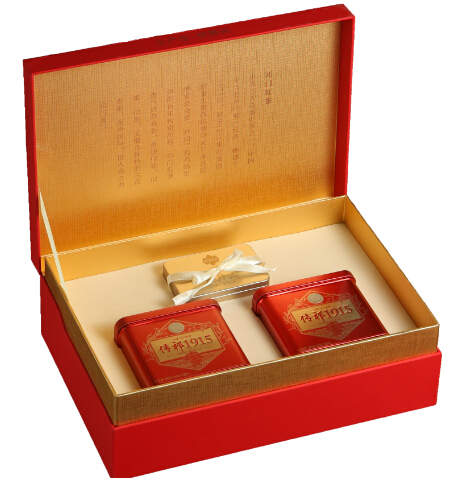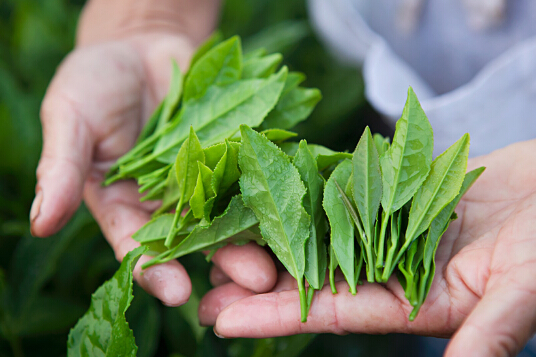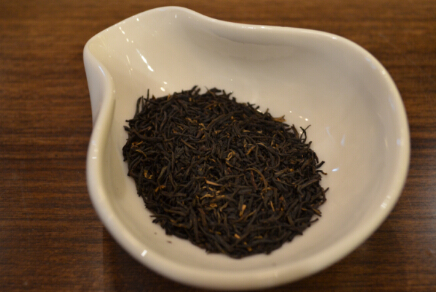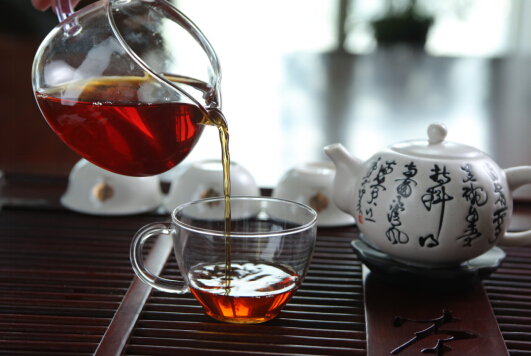"People cannot live in isolation; the reason for creating works is to communicate. Through their works, they convey their thoughts, their perspective on the world, what they care about, and what they cherish. Thus, a work is oneself... Faced with the materials gifted by nature, I must first perfect them before they can perfect me. I know that artisans often mean stubbornness, slowness, scarcity, and labor. But behind these lie focus, skill, and the pursuit of perfection." This passage from the advertisement video "To Craftsmanship" resonates deeply with many artisans and manufacturing enterprises. For craftsmen or companies, the final presentation to the world is their product, and a good product is the embodiment of their craftsmanship spirit.
To commemorate the 100th anniversary of Qimen Black Tea's award at the "Panama-Pacific International Exposition," Xiangyuan Tea meticulously crafted the annual commemorative product—Chuanqi 1915—in 2015. Chuanqi 1915 is made from early spring one-bud-one-leaf raw materials, supervised by intangible cultural heritage inheritors and handmade by experienced tea masters. The dry tea has a lustrous appearance, tightly rolled strips with golden tips, a sweet floral aroma, and a mellow, sweet aftertaste, showcasing the authentic traditional style of Qimen Black Tea. It revives the gold medal quality and has received widespread acclaim since its launch, truly a masterpiece of craftsmanship.


When it comes to Chuanqi 1915, its aroma is the most admirable: a complex, elegant fragrance known as "Qimen Fragrance," reminiscent of flowers, fruits, and honey, sweet and graceful, exuding a refined and elegant temperament. Its taste is balanced and elegant, perfect for direct consumption—sweet, mellow, and rich—or paired with cakes, pies, or Japanese desserts. The charm of Chuanqi 1915 lies in its恰到好处的口感 and harmonious flavor: methodical, steady, and composed, like a彬彬有礼的绅士. This complex, elegant aroma and balanced taste are inseparable from the meticulous efforts of the master tea makers.
Chuanqi 1915 inherits the traditional craftsmanship of Qimen Congou Black Tea, handmade by intangible cultural heritage inheritors and experienced tea masters. It undergoes four primary processes and over a dozen refining steps, each intricate and crucial, reflecting the utmost care and dedication.
Demanding Raw Materials
The dedication of Chuanqi 1915 begins with the picking of fresh leaves. In the early spring revival season, the masters tirelessly instruct the pickers on the standards for selecting fresh leaves, mostly choosing one-bud-one-leaf specimens. After collection, the leaves are further screened and sorted to ensure only the finest become the raw material for Chuanqi 1915. This rigorous selection process guarantees the superior quality of the final product from the very source.

The Birth of Qimen's High Fragrance
The primary processing involves withering, rolling, fermentation, and drying. Withering spreads the selected fresh leaves to evenly dissipate moisture, wilting them. This seemingly simple process requires constant monitoring to account for temperature, humidity, and wind changes, ensuring the leaves lose moisture at the right pace. Given the preciousness of the raw materials and the dedication to Chuanqi 1915, the masters often stay up all night monitoring, adjusting temperature, spread thickness, and turning frequency based on their decades of experience and meticulous study.

After withering, the leaves undergo rolling, the first step in shaping the tea. Rolling twists the withered leaves like kneading dough, forming strips. This process is crucial for enabling the tea's rapid infusion and flavor release during brewing. More importantly, rolling breaks the leaf cells, allowing tea polyphenols to oxidize upon contact with air, laying the foundation for fermentation and aroma development. This seemingly simple action holds great complexity, with the key challenges being pressure and frequency. Even minor variations can produce entirely different tea styles. Due to its high grade and precious raw materials, Chuanqi 1915 is hand-rolled by masters, demanding exceptional tactile sensitivity. Different pressures yield distinct drinking experiences: lighter pressure results in a brighter, more uplifting tea, while heavier pressure creates a deeper, mellower profile—all relying on the masters'手感. The masters seem to communicate with the leaves, sensing the perfect pressure through feedback. While pressure influences the tea's character, rolling frequency affects its shape. Too many rolls make the strips too tight; too few leave them loose. The entire process requires constant adjustment based on the leaves' color and tightness, showcasing the masters' skill in laying the foundation for Chuanqi 1915's quality. The rolled leaves are called "rolled tea."
If rolling lays the foundation for Chuanqi 1915's quality, fermentation is the key to its character. Fermentation is the critical step in black tea production, where green leaves transform into red, forming the tea's unique color, aroma, and taste. Modern fermentation techniques for Qimen Black Tea involve a dedicated fermentation room. During fermentation, polyphenols undergo intense oxidation, turning the leaves red and developing complex aromatic changes, crucial for the tea's signature qualities. The grassy scent of the leaves fades, replaced by a fresh, fruity-floral aroma. As fermentation progresses, compounds characteristic of Qimen's fragrance form, emitting a rich, fruity-floral scent. Studies show that fermented leaves contain significantly higher levels of alcohols, aldehydes, ketones, carboxylic acids, and phenols than withered leaves. The exact fermentation time and leaf thickness depend on the masters' "reading" of the tea—a skill honed over years. Improper thickness or timing can lead to under-fermentation (retaining grassy notes and dull color) or over-fermentation (muted aroma and dark liquor). For Chuanqi 1915, the masters constantly monitor the oxidation progress, adjusting temperature, humidity, or duration to ensure the perfect balance, resulting in its标准 aroma and taste.
The final primary step is drying, which for Chuanqi 1915 is more complex than most teas: it involves two stages—initial drying ("rough firing") and final drying ("足火"). Rough firing uses high heat for quick drying to halt fermentation and remove residual moisture, while足火 employs low heat for slow roasting, with intermittent cooling to prevent surface dryness and internal dampness. The right temperature evaporates low-boiling grassy compounds while preserving and enhancing high-boiling fruity-floral aromas, yielding Qimen Black Tea's distinctive "Qimen Fragrance." Improper timing or temperature can leave the tea under-dried or over-dried, compromising its aroma. Chuanqi 1915's perfect "Qimen Fragrance" stems from decades of experimentation by master tea makers, who have fine-tuned temperature and duration combinations to achieve the ideal balance.
Sifted to Perfection


After picking, withering, rolling, and fermenting, the嫩绿鲜叶 become dark red, slender strands of tea with a unique sweet aroma, known locally as "毛茶." To become the Chuanqi 1915 we savor, it must undergo the intricate refining process. Traditional Qimen Congou Black Tea refining involves over a dozen手工 steps: initial shaking, sifting, bag-beating,毛抖,毛撩,净抖,净撩,挫脚, wind selection, floating sifting,撼筛, hand-sorting, blending,补火, even piling, and装箱. Chuanqi 1915 is no exception. These steps may seem simple but are highly nuanced. Sifting alone is incredibly intricate, with over a dozen sieve types of varying mesh sizes, requiring years of experience to master. Xie Yongzhong, an intangible cultural heritage inheritor of Qimen Black Tea production, is a sifting virtuoso—a skill honed over 20+ years, yet he still seeks improvement. With a gentle flick of the sieve, the tea leaps and falls, separating the lighter, inferior碎茶 from the premium leaves retained for Chuanqi 1915. These repetitive, seemingly mundane motions embody the masters'心血 and their传承与专注 to the craft.
The Magic of Blending
Since its launch, Chuanqi 1915 has captivated tea lovers not only with its authentic "Qimen Fragrance" but also its harmonious taste. This balance owes much to Qimen's blending art—a magical process that elevates the tea's quality a second time, harmonizing its liquor color, aroma, and flavor. Blending is a time-honored skill, refined through years of tasting and adjustment, transcending technique to become an art form. Min Xuanwen—a national intangible cultural heritage inheritor of Qimen Black Tea production—is a blending maestro. After systematically studying each production step, he dedicated over 60 years to tea evaluation and blending. Now a technical advisor at Xiangyuan Tea's Qimen branch, he personally evaluates each batch during tea season. Lu Guofu, deputy general manager of Xiangyuan Tea's Qimen branch and another national inheritor, co-authored the "Qimen Black Tea" local standard and is Min's apprentice. Under their guidance, Chuanqi 1915 achieves its协调口感奥秘.

Primary processing lays the foundation for Chuanqi 1915's quality, while refining transforms the粗糙毛茶 into a风神俊秀 masterpiece. For the master tea makers, Chuanqi 1915 is their crystallized effort—four months of初制四道工序 and over a dozen精制 steps,极尽繁复考究,手上功夫, culminating in a祁红经典.翻手为云,覆手为雨, regardless of age, the masters' eyes radiate专注,技艺考究,震撼心灵的不仅是技艺,更是每一位制茶师对技艺的匠心精神.